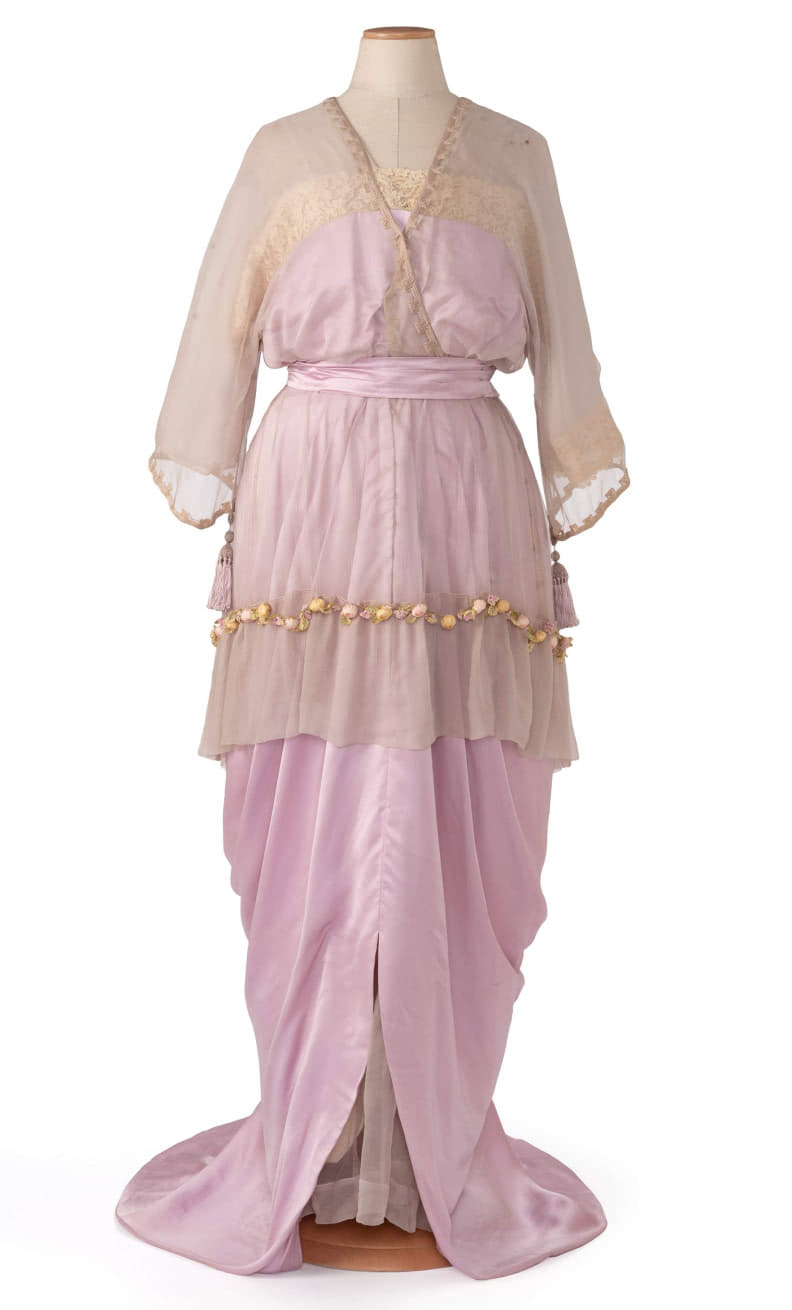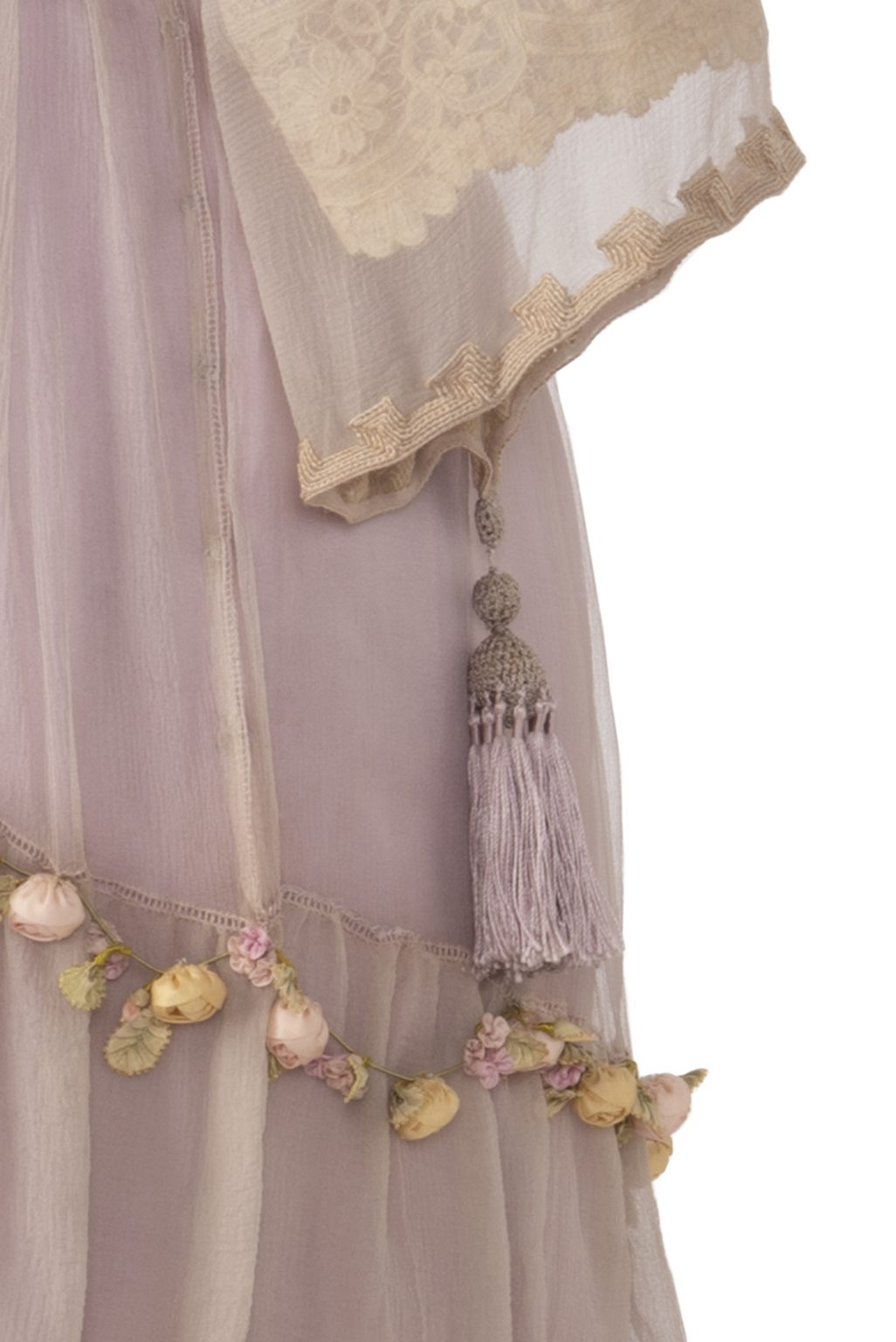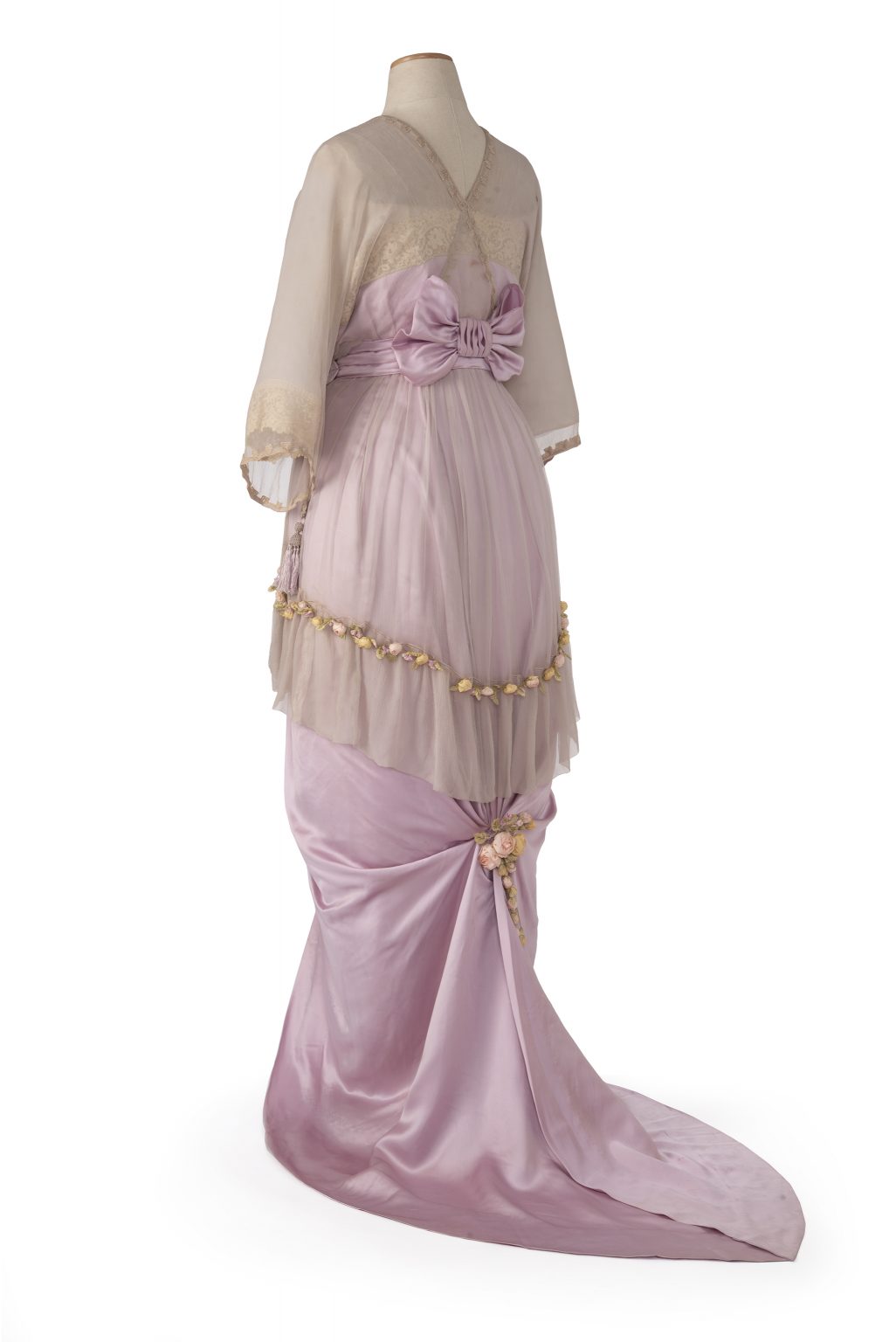
Dress 1908-13
Evening dress in pink silk satin and grey silk chiffon, with lace inserts, floral appliqué and embroidery, c. 1913-14, Camilla Colombo Collection
Details


Fashion
Between 1908 and the first half of the 1910s, fashions changed from the artificial S curve silhouette to a softer shape. The pompous pastel-coloured dresses of the beginning of the century were replaced by brightly coloured tunics with a high waistline and narrow skirt. This change was inspired first and foremost by the trend for Orientalism that blossomed in Paris with the debut of the Ballets Russes in 1909. The shapes and colours of India and the Middle East immediately influenced fashion and in particular the creations of Paul Poiret. Neoclassicism was another source of inspiration which can be seen in Mariano Fortuny’s Delphos dress, whose shape was inspired by Greek sculpture, or in Jeanne Paquin’s creations. Less voluminous dresses do not necessarily mean that they are more comfortable, however. Corsets were still worn in this period but now extended down to the thighs in accordance with the new fashions. Skirts became tighter and tighter around the ankles to the point where women were forced to walk with small steps, and hats became colossal. The apparent simplification of shapes in this period was still only superficial
Technical info
Women
The Maison Paquin represented the union between Art Nouveau and Expressionism. Jeanne Paquin opened her atelier in 1891 with her husband Isidore who took care of financial aspects while she used her couturier skills to create clothes inspired by the spirit of the time. She participated in many international exhibitions, including one in Turin in 1911 where models wearing dresses inspired by ancient Greek clothing danced barefoot in a neoclassical pavilion. Paquin had an international career with branches in Paris, London, New York, Buenos Aires and Madrid and a clientele that included European
royalty. Alongside her haute couture designs she also introduced a sportswear line. In 1913 she was awarded the Legion of Honour for commerce and from 1917 to 1919 she was the president of the Chambre Syndicale de la Haute Couture. Having established herself as a solid businesswoman, Jeanne Paquin retired in 1920, leaving the management of the maison to her assistant Madeleine Wallis.